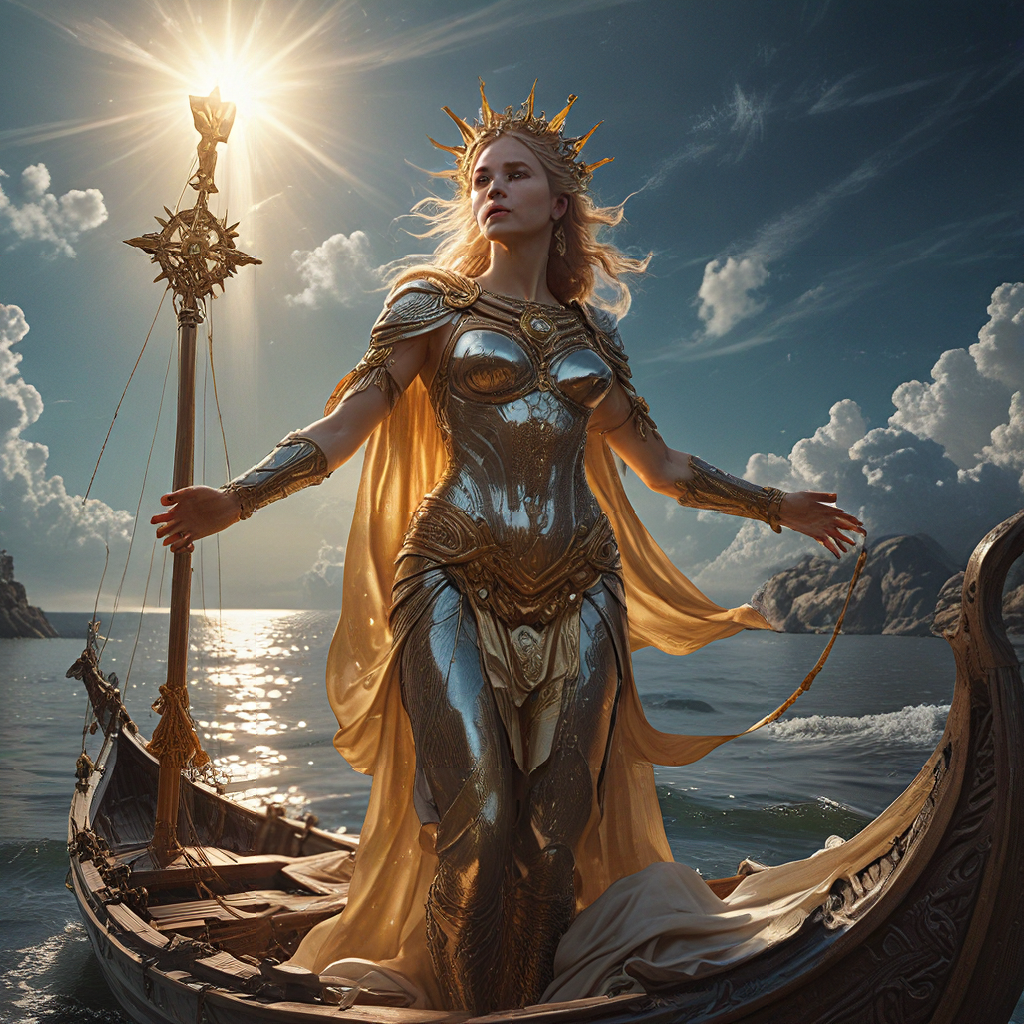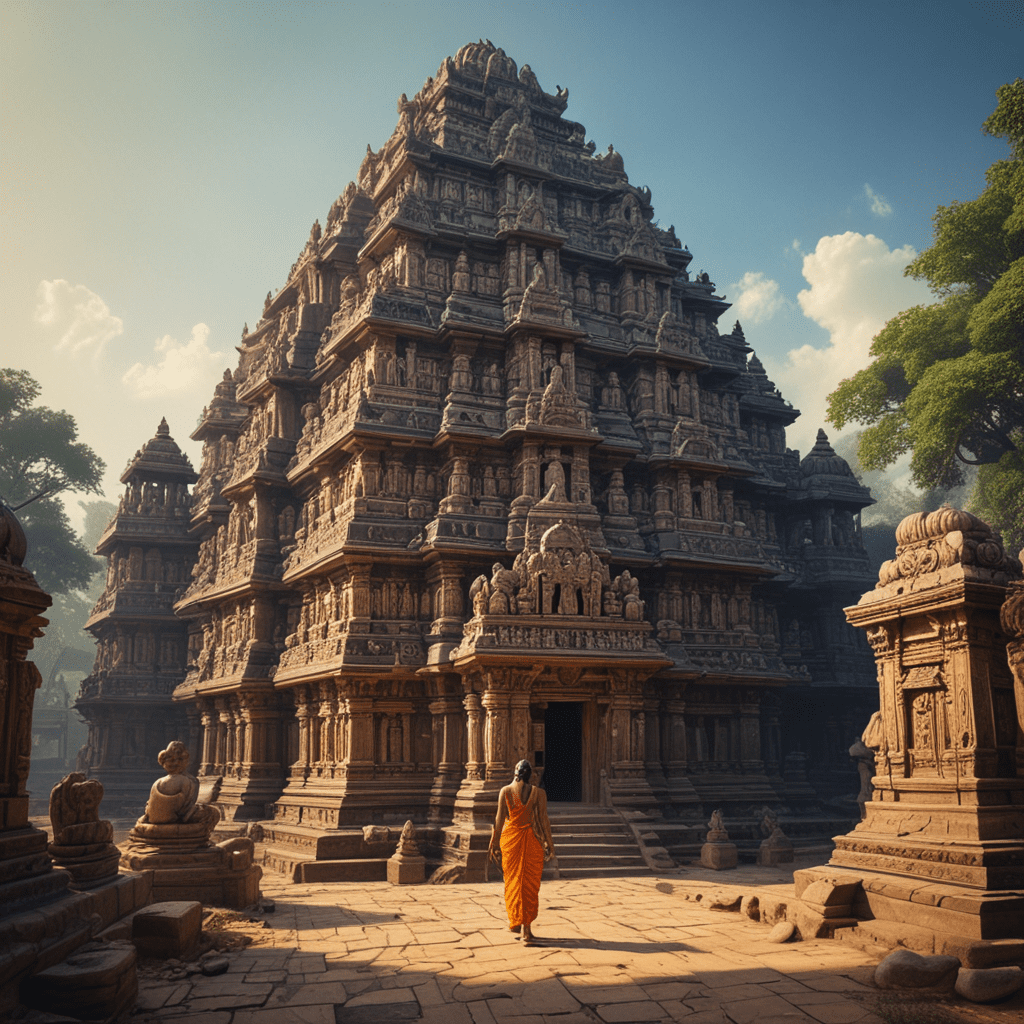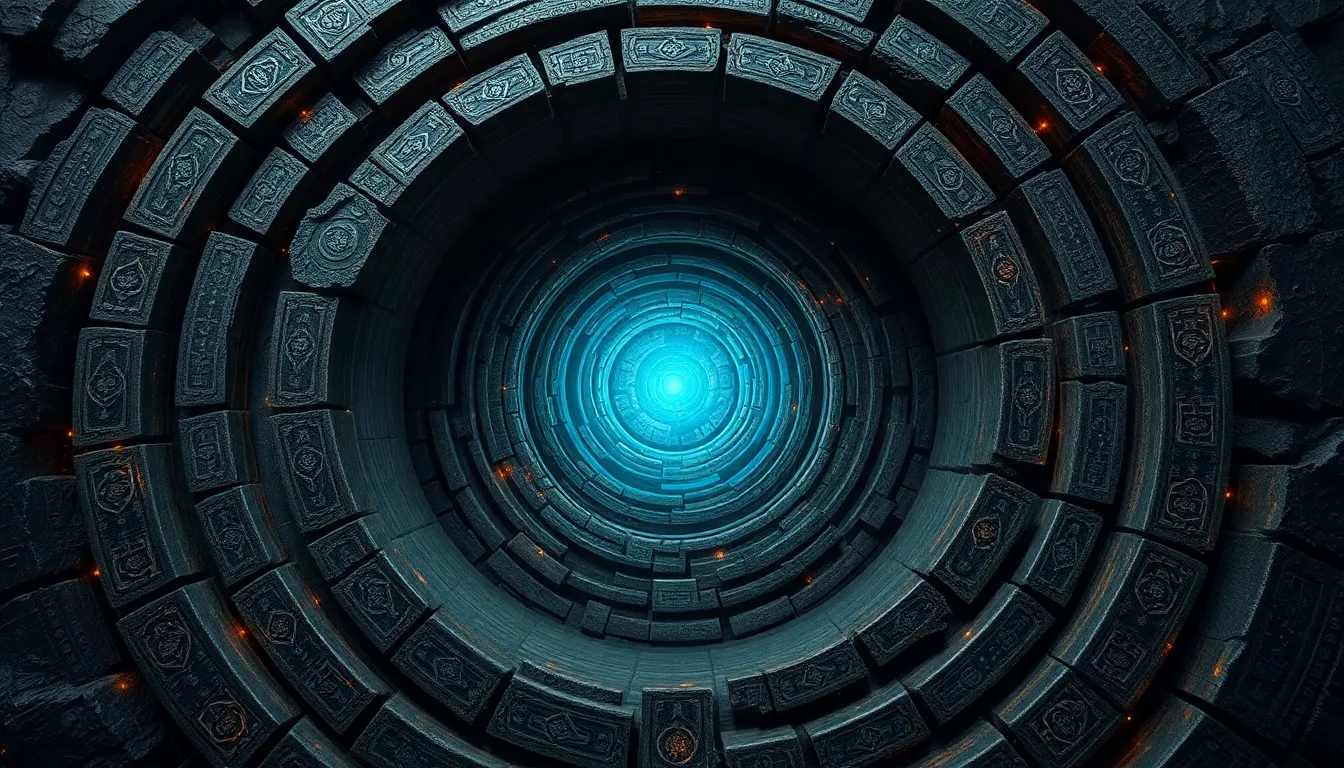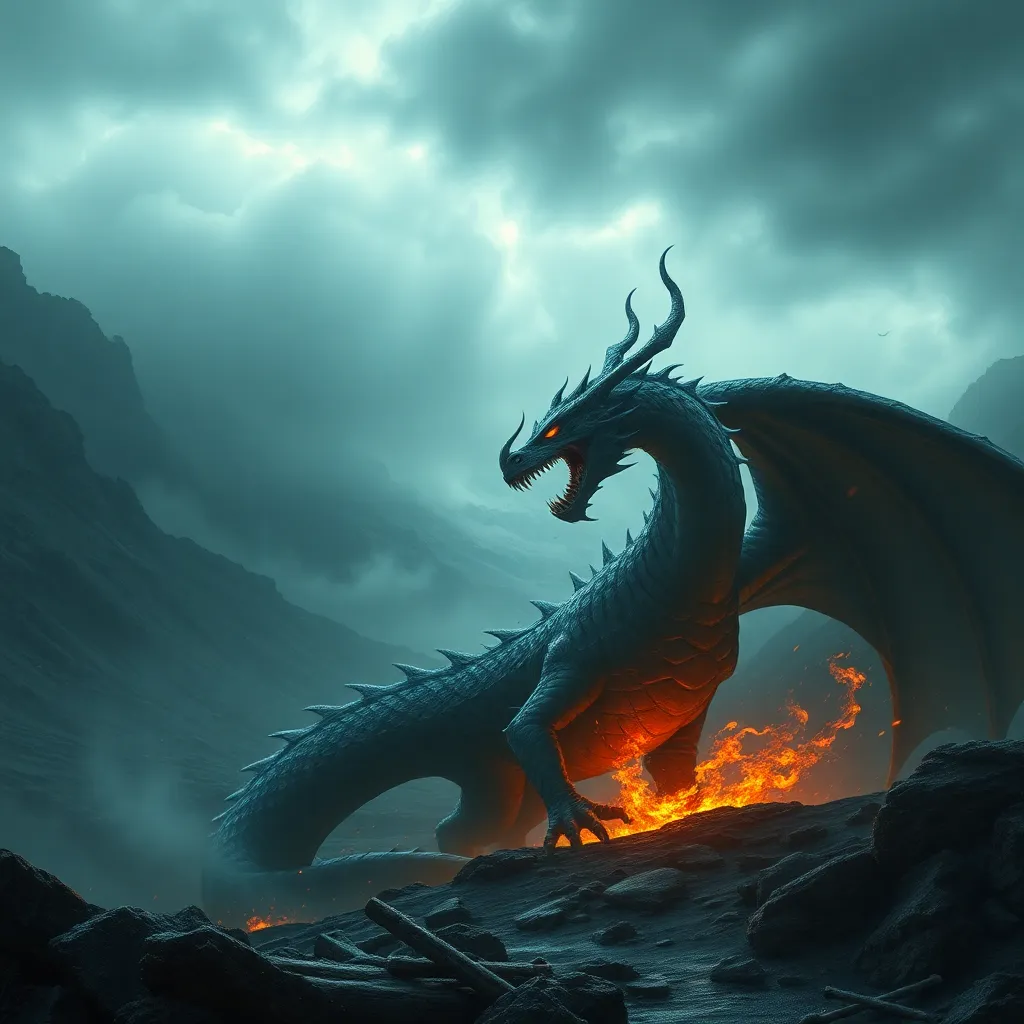Baltic Mythology: A Tapestry of Cosmic Order
Baltic mythology, a vibrant tapestry of ancient beliefs and stories, offers a fascinating glimpse into the worldview of the Baltic people. Rooted in the landscapes and natural phenomena of the Baltic region, this mythology weaves a complex narrative of cosmic order, highlighting the interconnectedness of all things. It emphasizes the interconnectedness of humanity with the cosmos, the role of deities in maintaining balance, and the importance of ritual and sacrifice in upholding this delicate equilibrium.
The Baltic cosmos, like many other ancient cultures' cosmologies, is structured around a clear hierarchy of deities, spirits, and natural forces. Each element plays a crucial role in maintaining the delicate balance of life, death, and the cyclical nature of existence. The Baltic world is not a chaotic realm but a carefully ordered universe governed by divine laws and intricate relationships. This cosmic order, reflecting the inherent harmony of nature, provides a framework for understanding the world and the place of humanity within it.
The World Tree: Axis Mundi and Cosmic Connection
At the heart of Baltic cosmology lies the World Tree, known as "Pasaulio medis" in Lithuanian. This mythical tree, often depicted as an oak, serves as the central axis of the cosmos, connecting the heavens, the earth, and the underworld. Like other World Tree myths found in Indo-European cultures, it symbolizes the interconnectedness of the different realms and the flow of energy between them.
The World Tree's roots extend deep into the underworld, where the souls of the departed reside. Its trunk symbolizes the earthly realm, the home of mortals, while its branches reach up to the celestial sphere, the domain of the gods. The World Tree, therefore, acts as a conduit for communication and exchange between the three levels of existence. This powerful symbol reinforces the idea that all life is interconnected and that the fate of each realm is intertwined with the others.
Dievs: The Sky God and Cosmic Authority
Dievs, the supreme sky god in Baltic mythology, embodies the ultimate authority and cosmic order. He personifies the sky, the heavens, and the power of nature. Dievs is often depicted as a benevolent but formidable figure, responsible for the weather, fertility, and the overall well-being of the world. His role is to maintain harmony and ensure the smooth functioning of the cosmos.
He is the ultimate lawgiver and judge, enforcing cosmic justice and ensuring that the natural order is upheld. His authority extends over all the other deities and beings in the Baltic pantheon, including the Sun, the Moon, the Earth Mother, and the various spirits inhabiting the underworld. This reinforces the concept of a hierarchical structure in the Baltic cosmos where order is maintained through divine authority and oversight.
The Sun and Moon: Celestial Deities and Cosmic Rhythm
The Sun and Moon play significant roles in Baltic mythology, representing the cyclical nature of time, the passage of seasons, and the rhythms of life. They are not merely celestial bodies but powerful deities, embodying the forces of light and darkness, creation and destruction. The Sun, known as "Saulė," is often associated with male energy, growth, and vitality. Its daily journey across the sky signifies the passage of time and the cycle of life and death.
The Moon, known as "Mėnulis," is associated with female energy, intuition, and the mysteries of the night. Its phases represent the cyclical nature of life, symbolizing death and rebirth, as well as the constant ebb and flow of energy. Together, the Sun and Moon represent the cosmic dance of light and darkness, creation and destruction, life and death that governs the universe and human existence.
The Earth Mother: Fertility, Creation, and Cosmic Sustenance
The Earth Mother, often called "Žemyna" in Lithuanian, embodies the generative power of the earth, representing fertility, abundance, and the nurturing aspect of nature. She is the source of life, the provider of sustenance, and the guardian of the natural world. Her role is to ensure the continuous flow of life and the abundance of the earth's bounty.
She plays a crucial role in the creation myth, bringing forth life and sustaining the world, creating the necessary conditions for all living things to thrive. She represents the cyclical nature of life, embodying the process of birth, growth, death, and rebirth, ensuring the continuity of existence. Her connection to the natural world emphasizes the importance of respecting and safeguarding the environment, viewing it as a sacred and interconnected space.
The Underworld and the Cycle of Life and Death
The Baltic underworld, known as "Põrgu" in Estonian, is not a place of eternal torment but a realm of shadows and ancestral spirits. It is a liminal space, a transition zone between life and death, where souls journey after leaving the earthly realm. This underworld is ruled over by various deities and spirits, including Velnias (the Devil), the powerful god of death, who guides souls to their final destination.
The Baltic underworld is not merely a place of darkness and decay but a vital part of the cycle of life and death. The spirits of the departed continue to have a profound influence on the living, acting as intermediaries between the mortal world and the divine realm. They can offer guidance, protection, and even influence the fate of their descendants. This belief in ancestral spirits emphasizes the interconnectedness of generations and the importance of honoring and remembering those who have passed on.
The underworld also holds significance in rituals and agricultural practices. For instance, the Baltic people often buried their dead near their homes and fields, symbolizing the return of the deceased to the earth, their spirits nourishing the land, and ensuring a fruitful harvest. This connection highlights the cyclical nature of life and death, reminding humans that they are but temporary stewards of the earth, connected to a larger cosmic order.
Cosmic Order and Moral Values: A Framework for Society
The Baltic cosmos, with its intricate web of deities, spirits, and natural forces, provides a powerful framework for understanding right and wrong, defining moral values, and shaping societal norms. Moral behavior is crucial for maintaining cosmic balance, ensuring the well-being of the world, and safeguarding the delicate harmony of the universe.
In Baltic mythology, acts of virtue, like generosity, hospitality, and respect for the natural world, are rewarded by the gods and spirits, while transgressions, such as selfishness, greed, and disrespect for the sacred, invite divine retribution. Mythical stories and folk tales often depict the consequences of actions, highlighting the interconnectedness of individual deeds with the larger cosmic order.
For example, the story of the "Laumės," benevolent spirits who protect infants and families, underscores the importance of hospitality and kindness. They are said to reward those who treat them with respect and offer them gifts, while punishing those who disregard them. Similarly, the myth of the "Ragana," a powerful witch who can wield both good and evil magic, highlights the importance of using power responsibly and ethically.
The Baltic worldview emphasizes the importance of living in harmony with the cosmic order, recognizing that individual actions have consequences both for oneself and for the world at large. This moral framework, ingrained in their mythology, shaped their social structures and values, promoting ethical behavior and a sense of responsibility towards the community and the cosmos.
The Role of Ritual and Sacrifice in Maintaining Cosmic Balance
Ritual and sacrifice play a crucial role in Baltic mythology, serving as a cornerstone for maintaining cosmic balance, ensuring the favor of the gods, and securing the well-being of the community. Rituals provided a structured framework for interacting with the divine, offering offerings to the gods, seeking guidance, and ensuring the continued prosperity of the community.
The most common sacrificial offering was the "Auka," a ritual sacrifice involving animals, specifically cattle, horses, pigs, and sometimes even humans. These offerings were made to the gods, seeking their blessings for a plentiful harvest, protection from harm, or victory in battle. The ritual of sacrifice not only acknowledged the power of the deities but also reinforced the interconnectedness between the mortal and divine realms, serving as a symbolic act of gratitude and submission.
However, Baltic mythology rarely depicts human sacrifice as a common practice. Evidence suggests that human sacrifice might have occurred in exceptional situations, such as in times of great crisis or to appease powerful deities like Perkūnas, the god of thunder. The primary focus of ritual and sacrifice was to maintain harmony between humanity and the cosmos, seeking the favor of the gods and ensuring the well-being of the community.
The Influence of Indo-European Mythology on Baltic Cosmology
Baltic mythology, like other branches of Indo-European mythology, shares common themes and elements that reflect a shared ancestry and cultural exchange. The World Tree, for example, is a central motif in both Baltic and other Indo-European cosmologies, symbolizing the interconnectedness of the universe and the flow of energy between different realms. The sky god, the Earth Mother, and the underworld, along with their associated deities, also appear in various forms across Indo-European cultures.
The Baltic pantheon also shares similarities with other Indo-European gods, such as Perkūnas (the god of thunder), who bears a resemblance to the Greek god Zeus and the Roman god Jupiter. This shared ancestry suggests a common Indo-European origin for these deities, reflecting the migration and cultural exchange of ancient Indo-European peoples.
However, Baltic mythology also exhibits unique characteristics that distinguish it from other Indo-European mythologies. The emphasis on the Earth Mother, the role of the Laumės (household spirits), and the prevalence of animistic beliefs are some of the features that distinguish Baltic mythology and highlight its distinct development within the broader Indo-European context.
Interpretations of Cosmic Order: From Folklore to Modern Scholarship
The concept of cosmic order in Baltic mythology has been interpreted in various ways, both in traditional folklore and modern scholarship. In traditional Baltic culture, the cosmic order was a lived reality, influencing daily life, rituals, and social structures. The mythology provided a framework for understanding the world and the place of humanity within the larger cosmos.
Modern scholarship has approached the study of Baltic mythology through various lenses, including historical, anthropological, and comparative mythology perspectives. By analyzing myths, folk tales, and archaeological evidence, scholars have sought to reconstruct the cosmology and belief systems of the Baltic people, offering insights into their understanding of the universe, the divine, and the human condition.
The concept of cosmic order in Baltic mythology remains relevant and resonates with contemporary audiences. It highlights the interconnectedness of all things, the importance of respecting the natural world, and the significance of community and tradition. As we face contemporary challenges, such as environmental degradation and social division, the insights offered by Baltic mythology, with its emphasis on cosmic balance and moral responsibility, can serve as a source of inspiration and guidance.
FAQ (Frequently Asked Questions)
Q: What is the Baltic World Tree?
A: The Baltic World Tree, known as "Pasaulio medis" in Lithuanian, is a mythical tree that connects the heavens, the earth, and the underworld. It symbolizes the interconnectedness of the universe and the flow of energy between different realms.
Q: Who is Dievs, the Baltic sky god?
**A: **Dievs, the supreme sky god, represents the ultimate authority and cosmic order. He controls the weather, fertility, and the overall well-being of the world.
Q: What is the significance of the Sun and Moon in Baltic mythology?
A: The Sun and Moon represent the cyclical nature of time, the passage of seasons, and the rhythms of life. They are powerful deities associated with light and darkness, creation and destruction.
Q: What is the role of the Earth Mother in Baltic mythology?
A: The Earth Mother represents the generative power of the earth, embodying fertility, abundance, and the nurturing aspect of nature. She is the source of life and the provider of sustenance.
Q: What is the Baltic underworld like?
A: The Baltic underworld is a realm of shadows and ancestral spirits, where souls journey after leaving the earthly realm. It is a liminal space between life and death.
Q: How does Baltic mythology influence moral values?
A: Baltic mythology provides a framework for understanding right and wrong, defining moral values, and shaping societal norms. Acts of virtue are rewarded, while transgressions invite divine retribution.
Q: What is the role of ritual and sacrifice in Baltic mythology?
A: Ritual and sacrifice are crucial for maintaining cosmic balance, ensuring the favor of the gods, and securing the well-being of the community. Sacrifices, primarily animal offerings, were made to the gods, seeking their blessings.
Q: What is the influence of Indo-European mythology on Baltic cosmology?
A: Baltic mythology shares common themes with other Indo-European mythologies, reflecting a shared ancestry and cultural exchange. However, it also exhibits unique characteristics that distinguish it from other branches of Indo-European mythology.
Q: How is cosmic order interpreted in Baltic mythology?
A: The concept of cosmic order is interpreted both in traditional folklore and modern scholarship. It highlights the interconnectedness of all things, the importance of respecting the natural world, and the significance of community and tradition.



